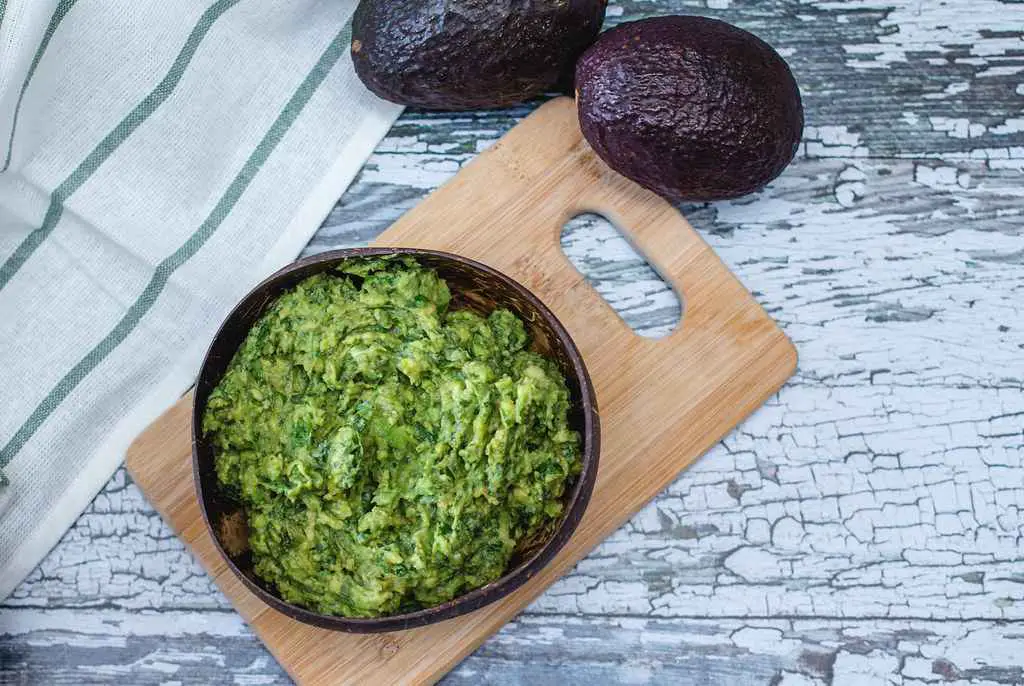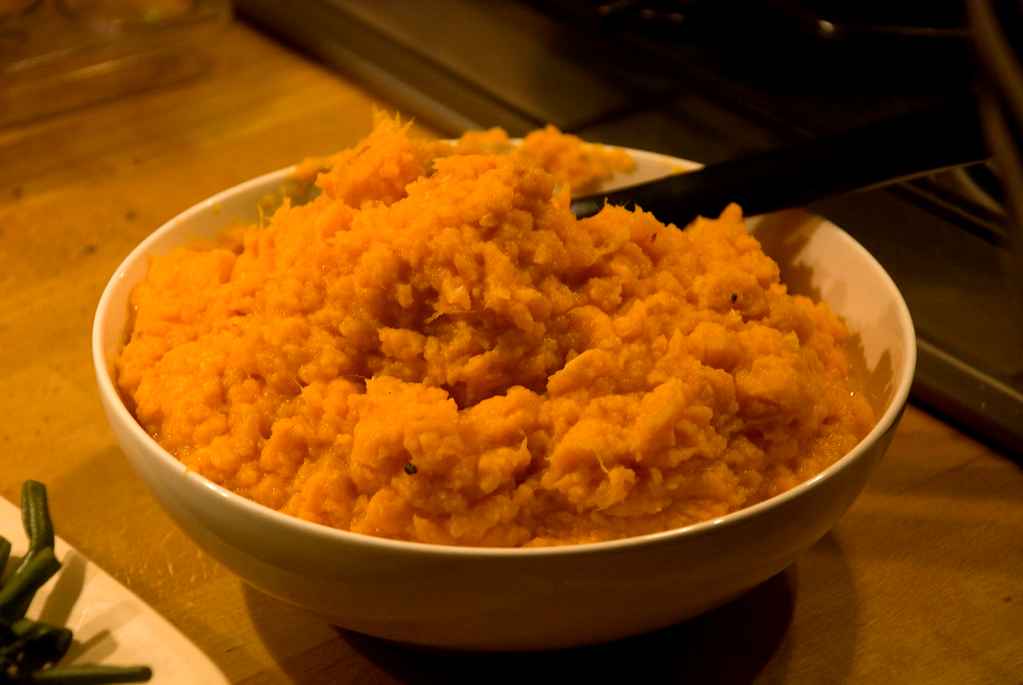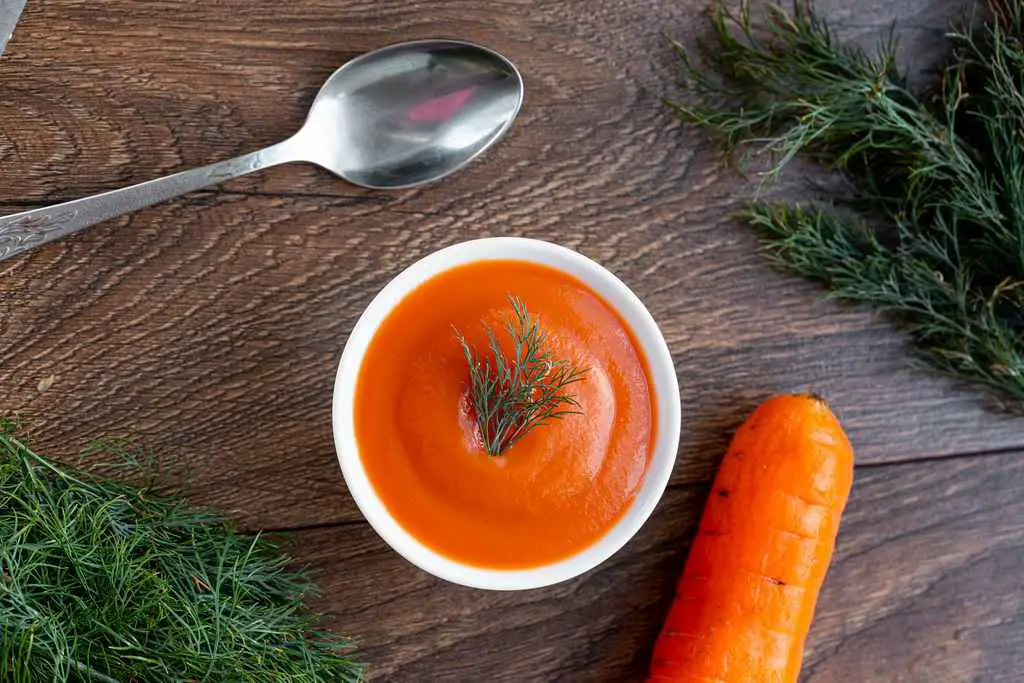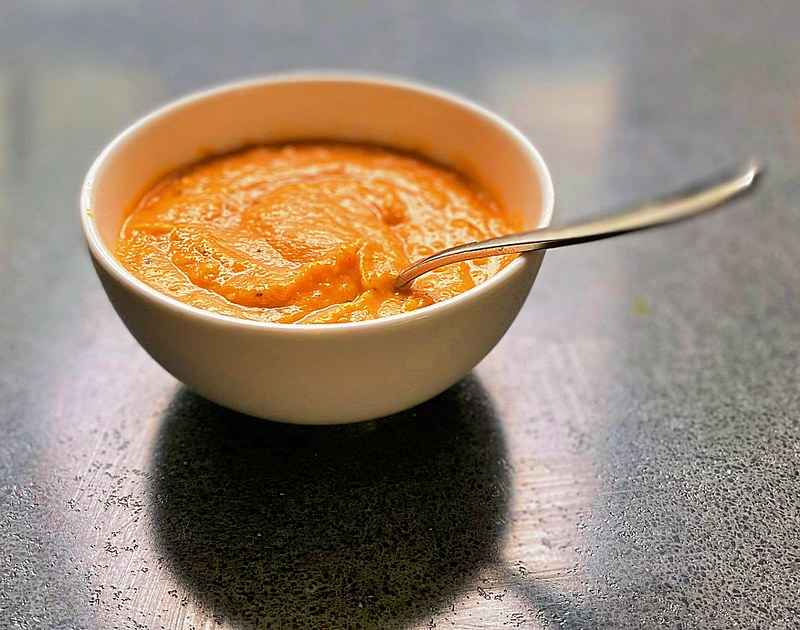Introducing baby food is an important step in a baby’s development. As they grow, their nutritional needs change, and it becomes necessary to introduce solid foods to provide additional nutrients and promote healthy eating habits. In this article, we will discuss the importance of introducing baby food, the factors to consider when deciding when to introduce it, and the impact it has on a baby’s development.
Why is the Introduction of Baby Food Important?
Breast milk or formula provides all the necessary nutrients that a baby needs in the first six months of life. However, as they grow, their nutritional needs change, and they require additional nutrients that cannot be provided by milk alone. The introduction of solid foods at around six months of age is important in order to provide these additional nutrients, such as iron, zinc, and calcium.
Introducing a variety of textures and tastes through solid foods is also important for babies to develop their palate and get used to different types of food. It is important to expose babies to a variety of flavors and textures to help them develop a liking for healthy foods and to prevent them from becoming picky eaters later in life.
As babies begin to eat solid foods, they also start to develop important motor skills such as chewing and swallowing. These skills are crucial for their overall development and help to prepare them for eating more complex foods as they grow older.
What Factors Should Be Considered When Deciding When to Introduce Baby Food?
The American Academy of Pediatrics recommends that babies be exclusively breastfed or formula-fed for the first six months of life. After six months, parents can begin introducing solid foods. However, every baby is different, and some may be ready for solid foods earlier or later than others. It is important to watch for signs of readiness, such as the ability to sit up with support, good head control, and interest in food.
Before introducing solid foods, it is important to make sure that the baby is developmentally ready. This includes being able to sit up with support, having good head control, and showing an interest in food. Introducing solid foods before the baby is ready can increase the risk of choking.
If there is a history of food allergies in the family, it may be necessary to introduce solid foods earlier or later than the recommended age to reduce the risk of an allergic reaction. Parents should consult with their healthcare provider if they have concerns about food allergies.
Ultimately, the decision to introduce solid foods should be based on the baby’s individual needs and the preferences of the parents. Some parents may choose to introduce solid foods earlier or later than the recommended age based on their personal beliefs or experiences.
How Does Introducing Baby Food Affect a Baby’s Development?
Introducing baby food can have a positive impact on a baby’s development. As they begin to eat solid foods, they develop important motor skills such as chewing and swallowing. These skills are crucial for their overall development and help to prepare them for eating more complex foods as they grow older.
Introducing a variety of textures and tastes through solid foods also helps babies to develop their palate and get used to different types of food. This can help to promote healthy eating habits later in life and prevent picky eating.
Additionally, introducing solid foods promotes independence and self-feeding skills in babies. As they become more comfortable with solid foods, they can start to feed themselves, which helps to develop their hand-eye coordination and promotes independence.
1: Early Signs of Readiness for Baby Food

1: What are the early signs that a baby is ready for solid foods?
As a baby grows, they start to show signs that they are ready for solid foods in addition to breastmilk or formula. Knowing when to introduce solid foods is important for a baby’s health and development. Here are some early signs that a baby is ready for solid foods:
- Good head and neck control: A baby needs to have good head and neck control before they can start eating solid foods. They should be able to sit upright with support to swallow safely. If a baby is not able to sit up without support, they may not be ready for solid foods yet.
- Interest in food: If a baby starts showing interest in the food that adults are eating and reaches for it, it could be a sign that they are ready for solid foods. This may manifest in them staring at your food, opening their mouth when they see food, or trying to grab food off your plate.
- Loss of tongue-thrust reflex: A baby’s tongue-thrust reflex, which causes them to push food out of their mouth, typically goes away between 4 and 6 months of age. This is a good indication that they are ready to start eating solid foods.
- Increased appetite: If a baby seems to be unsatisfied with breastmilk or formula alone and is hungry more often, it may be time to introduce solid foods.
2: What is the ideal age range for introducing baby food?
The ideal age range for introducing baby food is generally between 4 and 6 months of age. However, every baby is different and there is no one-size-fits-all approach. Some babies may be ready to start solid foods as early as 4 months, while others may not be ready until closer to 6 months.
It is important for parents to wait until their baby shows signs of readiness before introducing solid foods. This is because a baby’s digestive system needs time to mature before they can properly digest solid foods. Introducing solid foods too early can increase the risk of allergies and other digestive problems.
Breastmilk or formula provides all the necessary nutrients a baby needs for the first 6 months of life. However, after 6 months, a baby’s nutritional needs begin to change and solid foods become an important source of nutrients.
Parents should also consider their baby’s individual needs and consult with their healthcare provider before introducing solid foods. By waiting until the right time, parents can help their baby make a smooth transition to solid foods and set the stage for a lifetime of healthy eating habits.
3: Why should parents wait until their baby shows signs of readiness?
Firstly, a baby’s digestive system needs time to mature before they can properly digest solid foods. Introducing solid foods too early can put a strain on the baby’s digestive system and increase the risk of allergies and other digestive problems.
Secondly, introducing solid foods too early can interfere with the baby’s natural instinct to suck and root for breast milk or formula. This can lead to a decrease in milk intake and potentially affect their growth and development.
Waiting until a baby shows signs of readiness, such as good head and neck control, loss of tongue-thrust reflex, and an interest in food, can help ensure that they are developmentally ready for solid foods. It also allows them to have a positive experience with food and helps set the stage for healthy eating habits later in life.
Lastly, introducing solid foods too early can be a choking hazard for the baby. Waiting until the baby is developmentally ready and can sit up with support can reduce the risk of choking and make mealtimes safer and more enjoyable for both the baby and the parents.
2: The First Foods to Introduce

1: What are the best first foods to introduce to a baby?
When it comes to introducing solid foods to a baby, it is important to start with foods that are easy to digest and unlikely to cause an allergic reaction. Here are some of the best first foods to introduce to a baby:
- Iron-fortified infant cereal: Infant cereal is often the first solid food that parents introduce to their baby. It is a good source of iron, which is important for a baby’s growth and development.
- Pureed fruits and vegetables: Single-ingredient purees of fruits and vegetables are a great way to introduce different flavors and textures to a baby. Some good options include sweet potato, banana, avocado, and butternut squash.
- Mashed or pureed meats: Meats are a good source of protein and iron, which are important for a baby’s growth and development. Try pureed chicken, beef, or turkey.
- Yogurt: Yogurt is a good source of calcium and protein. Look for plain, whole-milk yogurt with no added sugar.
- Soft, cooked fruits and vegetables: As the baby becomes more comfortable with solid foods, they can start to try soft, cooked fruits and vegetables that are cut into small pieces. Some good options include cooked carrots, peas, and apples.
2: What are some common mistakes to avoid when introducing baby food?
Introducing solid foods to a baby can be an exciting and sometimes nerve-wracking experience for parents. Here are some common mistakes to avoid when introducing baby food:
- Introducing solids too early: It is important to wait until the baby shows signs of readiness before introducing solid foods. Starting too early can increase the risk of choking, digestive problems, and allergies.
- Offering too much food at once: Start with small amounts of food and gradually increase as the baby gets used to eating solids. Overfeeding can cause the baby to reject certain foods and can lead to digestive problems.
- Introducing new foods too quickly: Introduce new foods one at a time and wait a few days before introducing another new food. This can help you identify any potential allergic reactions or digestive problems.
- Adding sugar or salt to baby’s food: Avoid adding any sugar, salt, or other seasonings to baby’s food, as this can negatively affect their taste preferences and increase their risk of developing health problems.
- Offering foods that are not developmentally appropriate: Choose foods that are easy to digest and unlikely to cause an allergic reaction. Avoid offering foods that are difficult to chew or swallow, such as nuts, raw vegetables, or large chunks of meat.
3: Nutritional Considerations
1: What are the nutritional requirements for a baby who is starting on solid foods?
When a baby starts on solid foods, their nutritional requirements change as they are no longer solely relying on breast milk or formula. Here are some of the key nutritional requirements to consider when introducing solid foods:
- Iron: Iron is essential for a baby’s brain development, and it is important to ensure that they are getting enough iron-rich foods, such as fortified cereals, meat, poultry, fish, and beans.
- Protein: Protein is important for a baby’s growth and development, and can be found in meat, poultry, fish, beans, lentils, and tofu.
- Calcium: Calcium is important for healthy bones and teeth, and can be found in dairy products, such as cheese and yogurt, as well as fortified plant-based milks.
- Vitamin C: Vitamin C is important for the absorption of iron, and can be found in fruits such as oranges, kiwi, and strawberries.
- Healthy Fats: Healthy fats are important for brain development and can be found in foods such as avocados, nut butter, and oily fish like salmon.
It’s important to offer a variety of foods to ensure that the baby is getting a range of nutrients. It’s also important to avoid offering foods that are high in sugar, salt, and unhealthy fats, as these can negatively impact a baby’s health.
2: How can parents ensure that their baby is getting all of the necessary nutrients from food?
As babies transition to solid foods, it’s important to ensure that they are getting all of the necessary nutrients from food. Here are some tips to help parents ensure their baby is getting the nutrients they need:
- Offer a variety of foods: It’s important to offer a variety of foods to ensure that the baby is getting a range of nutrients. This can include fruits, vegetables, protein-rich foods, and healthy fats.
- Focus on nutrient-dense foods: Nutrient-dense foods are foods that provide a lot of nutrients in a small amount of calories. Examples include leafy greens, berries, and whole grains.
- Offer age-appropriate portions: It’s important to offer age-appropriate portions to ensure that the baby is getting the right amount of nutrients. Parents can consult with their healthcare provider to determine the appropriate portion sizes for their baby’s age and development.
- Use cooking methods that preserve nutrients: Steaming, baking, and grilling are all cooking methods that can help preserve the nutrient content of foods.
- Limit processed foods: Processed foods can be high in sugar, salt, and unhealthy fats, which can negatively impact a baby’s health. It’s best to limit the amount of processed foods offered to the baby.
3: Are there any foods that should be avoided during the first few months of introducing baby food?
Yes, there are certain foods that should be avoided during the first few months of introducing baby food. These include:
- Honey: Honey should be avoided until the baby is at least one year old, as it can cause infant botulism.
- Cow’s milk: Cow’s milk should not be introduced until the baby is at least one year old, as it can be difficult for their digestive system to process.
- Egg whites: Egg whites should be avoided until the baby is at least one year old, as they can cause an allergic reaction.
- Shellfish: Shellfish should be avoided until the baby is at least one year old, as it can cause an allergic reaction.
- Citrus fruits: Citrus fruits can be acidic and may cause irritation to the baby’s digestive system. It’s best to avoid them until the baby is at least six months old.
- Choking hazards: Foods that are small and hard, such as nuts, popcorn, and hard candies, should be avoided as they can be choking hazards.
4: Food Allergies and Intolerances
1: What are common food allergies and intolerances that parents should be aware of?
When introducing solid foods to your baby, it’s important to be aware of common food allergies and intolerances. Being informed can help you avoid potential health issues and keep your baby safe and healthy.
The most common food allergy in babies is cow’s milk protein allergy. Symptoms can include vomiting, diarrhea, and skin rashes. If your baby experiences any of these symptoms after consuming cow’s milk or dairy products, it’s important to talk to your healthcare provider.
Egg allergy is also common in babies, with symptoms such as hives, swelling, and digestive issues. Peanut allergy is a concern for many parents as it can be severe, with symptoms such as difficulty breathing, hives, and anaphylaxis. Soy allergy is less common but can still cause symptoms such as hives, itching, and digestive issues.
Gluten intolerance or celiac disease can cause digestive issues and malabsorption of nutrients. Lactose intolerance is another condition that can cause digestive issues, with symptoms such as bloating, gas, and diarrhea.
As a parent, it’s important to watch for any symptoms or reactions when introducing new foods to your baby. If you suspect your baby has a food allergy or intolerance, talk to your healthcare provider for advice and guidance. In some cases, your healthcare provider may recommend an allergy test to confirm the diagnosis.
To help prevent food allergies and intolerances, it’s recommended to introduce one new food at a time, waiting several days before introducing another new food. This allows you to monitor your baby’s reaction and identify any potential allergens. It’s also important to read food labels carefully and avoid foods that contain common allergens.
2: What should parents do if their baby experiences an allergic reaction?
If a baby experiences an allergic reaction after eating a particular food, it’s important for parents to act quickly and seek medical attention. Symptoms of an allergic reaction can vary from mild to severe, and can include:
- Hives
- Angioedema
- Difficulty breathing
- Vomiting or diarrhea
- Pale skin
- Weak pulse
- Loss of consciousness
If you suspect your baby is having an allergic reaction, call your local emergency services immediately. If your baby’s symptoms are mild, you can contact your healthcare provider or go to the nearest urgent care or emergency room.
After seeking medical attention, it’s important to identify the food that caused the allergic reaction and avoid it in the future. Talk to your healthcare provider for advice on how to manage your baby’s allergies and how to introduce new foods safely.
5: Building a Healthy Eating Foundation
1: How can parents encourage healthy eating habits in their babies?
Encouraging healthy eating habits in babies is essential for their growth and development. As parents, it is important to provide a balanced and nutritious diet that meets their nutritional needs. Here are some strategies for promoting healthy eating habits in babies:
Introduce a variety of foods
Introduce a variety of fruits, vegetables, whole grains, lean proteins, and dairy products to your baby’s diet. This helps expose them to different tastes and textures and ensures they receive a range of nutrients. Offer a mix of pureed and finger foods to encourage self-feeding and independence.
Set a regular meal and snack schedule
Establish a regular meal and snack schedule to help your baby develop a routine and prevent overeating. Offer small, frequent meals throughout the day, with healthy snacks in between. This can help maintain their energy levels and keep them satisfied.
Avoid sugary and processed foods
Avoid sugary and processed foods as much as possible. These foods provide little nutritional value and can lead to unhealthy habits later in life. Opt for fresh, whole foods instead, and limit added sugars.
Create a positive mealtime environment
Create a positive mealtime environment by sitting down together as a family, avoiding distractions like TV or phones, and making mealtimes an enjoyable experience. Encourage conversation and avoid pressuring your baby to eat.
Be patient and persistent
Babies may need multiple exposures to new foods before they develop a taste for them. Be patient and persistent in offering a variety of healthy options. Keep in mind that taste preferences can change over time, so don’t be discouraged if your baby initially refuses a certain food.
Involve your baby in meal preparation
Involve your baby in meal preparation by letting them observe and participate in the process. This can help them develop an interest in food and promote a sense of independence.
6: Common Challenges
1: What are some common challenges that parents may face when introducing baby food?
Introducing solid foods to a baby can be an exciting milestone, but it can also come with its fair share of challenges for parents. Here are some common challenges that parents may face when introducing baby food and how to overcome them:
- Food rejection: It’s not uncommon for babies to reject new foods or textures. This can be frustrating for parents who have spent time and effort preparing the food. To overcome this, try introducing the food in small amounts and mix it with a food that your baby already likes. Also, be patient and try the same food again after a few days.
- Messy eating: As babies explore new foods, they may make a mess. To minimize the mess, consider using a bib and a high chair with a tray. You can also place a plastic sheet or towel under the high chair to catch any spills.
- Digestive issues: Some babies may experience constipation, diarrhea or stomach upset when starting on solid foods. To prevent this, introduce new foods slowly and in small amounts. Also, make sure your baby is getting enough fluids and fiber in their diet.
- Time constraints: Preparing homemade baby food can be time-consuming. To save time, consider making large batches of food and freezing them in individual portions. You can also opt for store-bought baby food, but make sure to read the labels and choose options with minimal additives and preservatives.
- Food allergies: Food allergies can be a serious concern for parents. To minimize the risk of an allergic reaction, introduce one new food at a time and wait a few days before introducing another. This will help you identify any potential allergens. If you suspect your baby has an allergy, seek medical advice immediately.
- Lack of variety: It’s important for babies to have a variety of foods in their diet to ensure they get all the necessary nutrients. To overcome this challenge, try introducing new foods and textures regularly. You can also offer different combinations of foods to keep your baby interested.
7: Preparing Homemade Baby Food
1: What are the benefits of preparing homemade baby food?
There are many benefits to preparing homemade baby food for your little one. One of the biggest advantages is that you have complete control over the ingredients that go into your baby’s food, ensuring that it is fresh, nutritious, and free of any unwanted additives or preservatives.
Another benefit is that homemade baby food is often more cost-effective than store-bought options. By purchasing fresh produce in bulk and preparing it yourself, you can save money and also reduce food waste.
Preparing homemade baby food can also be a fun and creative way to introduce your baby to a variety of flavors and textures. You can experiment with different fruits, vegetables, and grains to find combinations that your baby enjoys, and gradually introduce them to new flavors and textures as they grow and develop.
Finally, making your own baby food can help promote healthy eating habits and a love of fresh, whole foods from an early age. By exposing your baby to a variety of healthy foods and flavors, you can help set them up for a lifetime of healthy eating habits and good nutrition.
2: How can parents safely prepare and store homemade baby food?
Preparing homemade baby food can be a great way to ensure that your baby is getting the best nutrition possible. However, it’s important to follow safe preparation and storage practices to minimize the risk of foodborne illness. Here are some tips for safely preparing and storing homemade baby food:
- Cleanliness: Always start with clean hands, utensils, and work surfaces. Wash your hands thoroughly before handling food, and wash all utensils and work surfaces with hot, soapy water before and after use.
- Fresh ingredients: Use fresh, high-quality ingredients when making homemade baby food. Avoid using ingredients that are past their expiration date or that show signs of spoilage.
- Cooking: Cook all meats, poultry, and fish thoroughly to an internal temperature of 165°F to kill any harmful bacteria. Fruits and vegetables should be cooked until they are soft and easy to mash.
- Pureeing: Use a food processor, blender, or immersion blender to puree the food to a smooth consistency. Be sure to remove any pits, seeds, or tough skins before pureeing.
- Storage containers: Use clean, airtight containers for storing homemade baby food. Glass or BPA-free plastic containers with tight-fitting lids are good options. Make sure to label each container with the contents and the date it was prepared.
- Refrigeration: Store homemade baby food in the refrigerator for no more than 3 days. If you need to store it for longer, freeze it in small portions and thaw only what you need.
3: What are some easy homemade baby food recipes?
Introducing your baby to solid foods is an exciting milestone, but it can also be a daunting one. Store-bought baby food is convenient, but making your own baby food can be a fun and cost-effective alternative. With a few basic ingredients and some kitchen tools, you can whip up nutritious and delicious meals for your little one in no time.
Here are some easy homemade baby food recipes to get you started:
1: Avocado Mash

Avocados are an excellent source of healthy fats, vitamins, and minerals. Simply mash a ripe avocado and mix it with a little breast milk or formula to make a smooth puree. You can also add a pinch of cinnamon or nutmeg for extra flavor.
2: Sweet Potato Mash

Sweet potatoes are packed with vitamin A and fiber, making them a great choice for a baby’s first foods. Peel and chop a sweet potato, boil until tender, then mash with a fork. Add a little breast milk or formula to make it smoother.
3: Apple Puree

Apples are a good source of fiber and vitamin C. Peel and core an apple, chop it into small pieces, and steam it until tender. Mash with a fork or puree in a blender. You can also add a pinch of cinnamon or ginger for extra flavor.
4: Carrot Puree

Carrots are a rich source of beta-carotene and vitamin A. Peel and chop 2-3 carrots, boil until tender, then puree in a blender or food processor with a little water or breast milk. You can also add a pinch of cumin or coriander for extra flavor.
5: Banana Mash

Bananas are a great first food for babies as they are easy to digest and packed with nutrients. Peel a ripe banana and mash it with a fork until smooth. You can also mix in a little plain yogurt for added creaminess.
6: Butternut Squash Puree

Butternut squash is high in vitamin A and potassium. Peel and chop butternut squash, boil until tender, then puree in a blender or food processor with a little water or breast milk. You can also add a pinch of nutmeg or thyme for extra flavor.
7: Green Bean Puree

Green beans are a good source of folate and vitamin C. Steam or boil green beans until tender, then puree them in a blender or food processor with a little water or breast milk. You can also add a pinch of garlic or lemon juice for extra flavor.
When making homemade baby food, it is important to use fresh, organic produce whenever possible. Wash and peel all fruits and vegetables before cooking, and cook them until they are soft and tender. Use a blender or food processor to puree the food until it is smooth and free of lumps.
When do babies start eating pureed food?
Babies typically start eating pureed food around 4 to 6 months of age, depending on their developmental readiness and the recommendation of their healthcare provider. At this age, babies are generally able to sit up with support and have gained sufficient head control and tongue movements necessary for safe and effective feeding.
It is important to introduce pureed foods gradually and one at a time, to monitor for any signs of allergies or intolerance. It is also recommended to wait for at least 3 to 5 days between introducing new foods to allow time for any adverse reactions to surface.
When to start solid food for baby?
The American Academy of Pediatrics (AAP) recommends that babies be introduced to solid foods between 4 and 6 months of age. However, it’s important to watch for signs of readiness, such as sitting up with support, showing interest in food, and having good head and neck control. It’s also important to talk to your baby’s healthcare provider before starting solid foods to ensure that your baby is developmentally ready and to get guidance on the best way to introduce new foods.
7: Conclusion
In conclusion, introducing baby food is an important milestone in a baby’s development, but it is crucial that parents wait until their baby shows signs of readiness. The ideal age range for introducing baby food is around six months, and parents should carefully select the best first foods for their baby’s needs.
It is important to prepare and serve baby food safely, avoiding common mistakes and being aware of any potential allergens or intolerances. By providing a balanced and nutritious diet, parents can encourage healthy eating habits in their baby and ensure that their baby is getting all of the necessary nutrients from food.
Finally, preparing homemade baby food can have many benefits, but it is important to follow proper guidelines for safe preparation and storage. With patience, care, and attention to their baby’s needs, parents can make the process of introducing baby food a positive and rewarding experience for both themselves and their baby.







